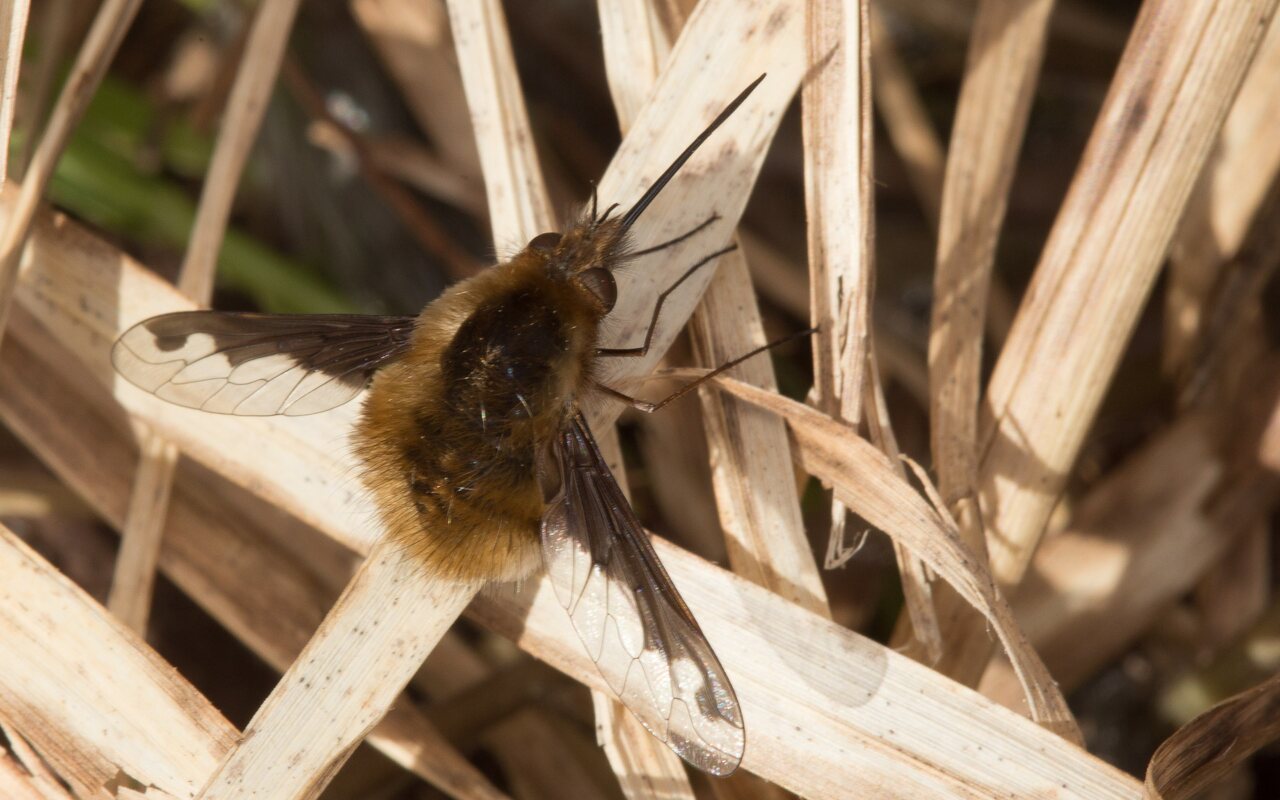
Bombylius major · didžioji zvimbeklė
EN · large bee-fly, the dark-edged bee-fly, the greater bee fly
DE · Großer Wollschweber
LV · lielā pūkmuša
PL · bujanka większa
DE · Großer Wollschweber
LV · lielā pūkmuša
PL · bujanka większa
https://en.wikipedia.org/wiki/Bombylius_major
The fly uses mimicry of bumblebees to its own advantage, allowing close access to host solitary bee and wasp nests in order to deposit its eggs. After hatching, the larvae find their way into the nests to parasitically feed on the grubs.
B. major is mostly seen in the spring, beginning to appear at the end of March and large numbers seen until the end of May, with the species being sighted into June. Some flowers, for example Pulmonaria officinalis, will be almost exclusively pollinated by Bombylius major.
0179